We’re going in-depth on how to write wedding vows—including some traditional and modern wedding vow ideas and inspiration, as well as advice from the experts.
Of all of the parts of a wedding day, the exchange of wedding vows is often one of the most beautiful.
Wedding vows are arguably some of the most significant words you will ever utter in your life—words you both will hold in your hearts and in your minds as you journey through married life.
When it comes to something so important, the pressure can definitely creep up on you. How do you navigate preparing for such a crucial moment?
Thankfully, the truth is that it’s actually just all about finding what works for you. Read on as we walk you through everything you need to know about wedding vows.
Before you start Googling ‘romantic wedding vows’ or ‘best wedding vows ever heard,’ it might be best to get a bit of background on what exactly wedding vows actually are.
Not a history buff? Click here to go straight to the heart of your wedding vows
OR
To download your free wedding vowel template click here!
Perhaps one of the most widespread versions of an English traditional marriage vow is the one many Anglican churches worldwide use:
“I [bride/groom/partner] take you, [bride/groom/partner] to be my [wife/husband/partner], to have and to hold from this day forward, for better, for worse, for richer, for poorer, in sickness and in health, to love and to cherish, till death us do part, according to God’s holy law, and this is my solemn vow.”
With variations of this popularized by countless mainstream movies and TV shows, these vows can be traced back to as far back as Medieval England.
The Book of Common Prayer from 1549 is often credited as the origin of traditional wedding vows. It also includes familiar phrases “Speak now or forever hold your peace” and “’Til death do us part” in its marriage liturgy.
However, today’s wedding vows’ roots go even further back. The 1300’s Latin liturgical rites, the Sarum Rites, already bear resemblance to the popular words we know today.
Today, there are so many variations of this traditional wedding vow text. Not only that, but there are also a multitude of other types of wedding vows beyond religious and traditional.
So what do all these have in common? What are vows in marriage?
During the ceremony, the exchange of wedding vows is an opportunity to verbalise your love for each other. This may mean talking about your story and journey as a couple or declaring to the world everything you adore about each other. It can include painting a picture of the future you want to build together and the importance of having each other in one another’s lives.
But at the very heart of it, wedding vows are promises—promises of the kind of love, commitment, and faithfulness you pledge to each other in marriage. Through your vows, you confirm the sanctity of marriage, swearing to share your life with your partner through all the ups and downs.
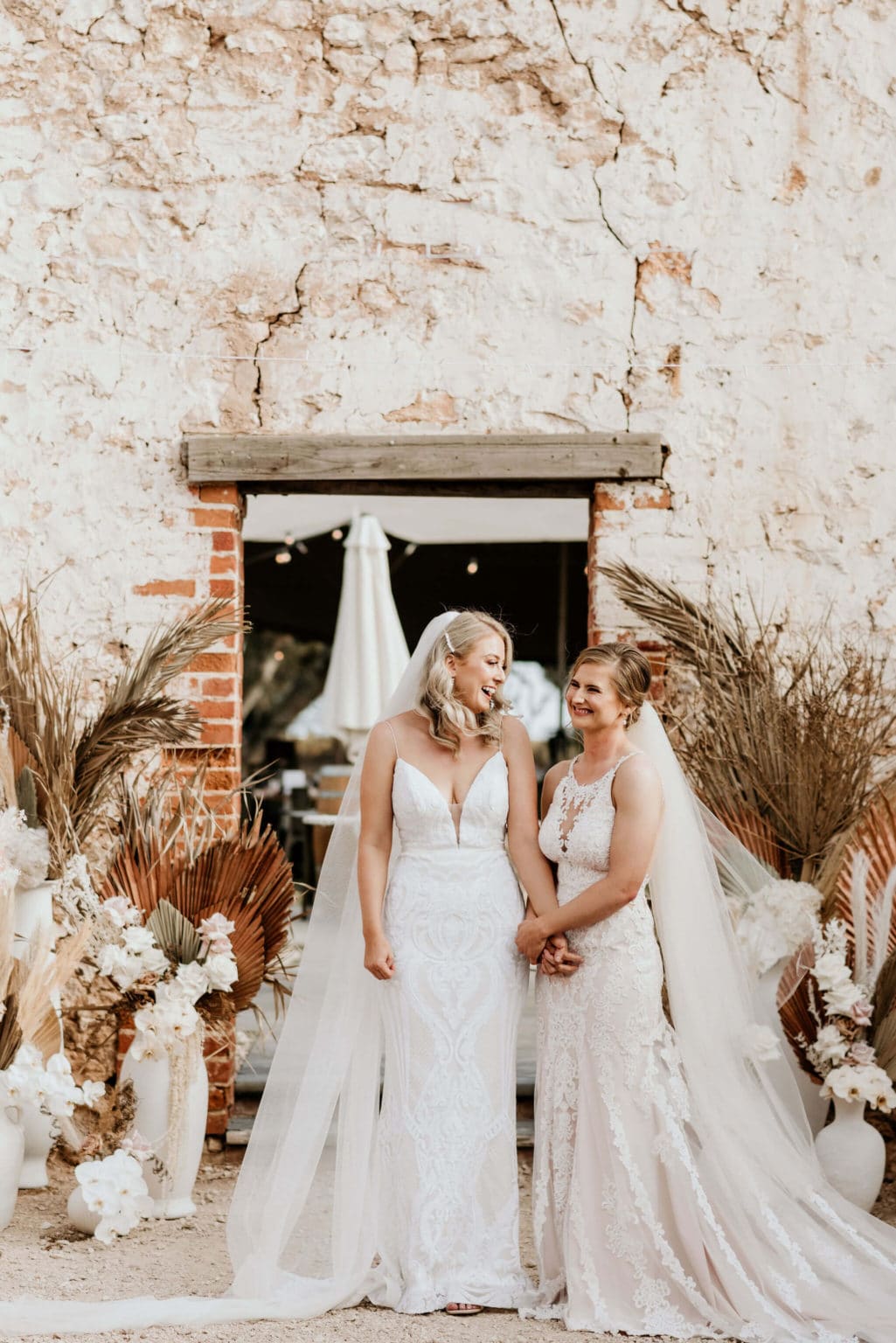
Wedding vows generally follow three common formats:
Although these are the main categories that vows fall into in terms of structure, there are a huge variety of types of wedding vows to choose from.
Let’s begin with the basics—traditional wedding vows. There are classic, simple wedding vows available for both religious and secular or civil weddings.
As mentioned earlier, the most common religious traditional vow is the Christian or Catholic wedding vow from the Church of England (“I take you… to have and to hold… ‘til death do us part”). Most Protestant, Presbyterian, Lutheran, and even interfaith vows are variations of this classic wedding vow.
In many ceremonies, this is accompanied by an exchange of rings, in which the wedding vows continue:
“[Bride/groom/partner] I give you this ring as a sign of our marriage. With my body, I honour you, all that I am I give to you, and all that I have I share with you, within the love of God, Father, Son, and Holy Spirit.”
For secular vows, civil marriages may require certain phrases to be included for legal reasons. In Australia, while liberties may be taken in adding on to your vows, the following statement must be included:
“I call upon the persons here present to witness that I, A.B. [or C.D.], take thee, C.D. [or A.B.], to be my lawful wedded [wife/husband/spouse].”
This can then be followed by personal or cultural vows of your choosing. You may also opt to include some version of a non-religious exchange of rings:
“I give you this ring as a sign of our love, trust, and marriage. I promise to care for you above all others, to give you my love, friendship, and support, and to respect and cherish you throughout our life together.”
As you can see, whether religious or secular, traditional vows can be an excellent choice for couples who prefer to keep things simple and succinct, while still beautifully sincere.
If you’d love for your traditional wedding vows to celebrate your heritage and ancestry, click here to check out these bonus cultural wedding vow ideas!
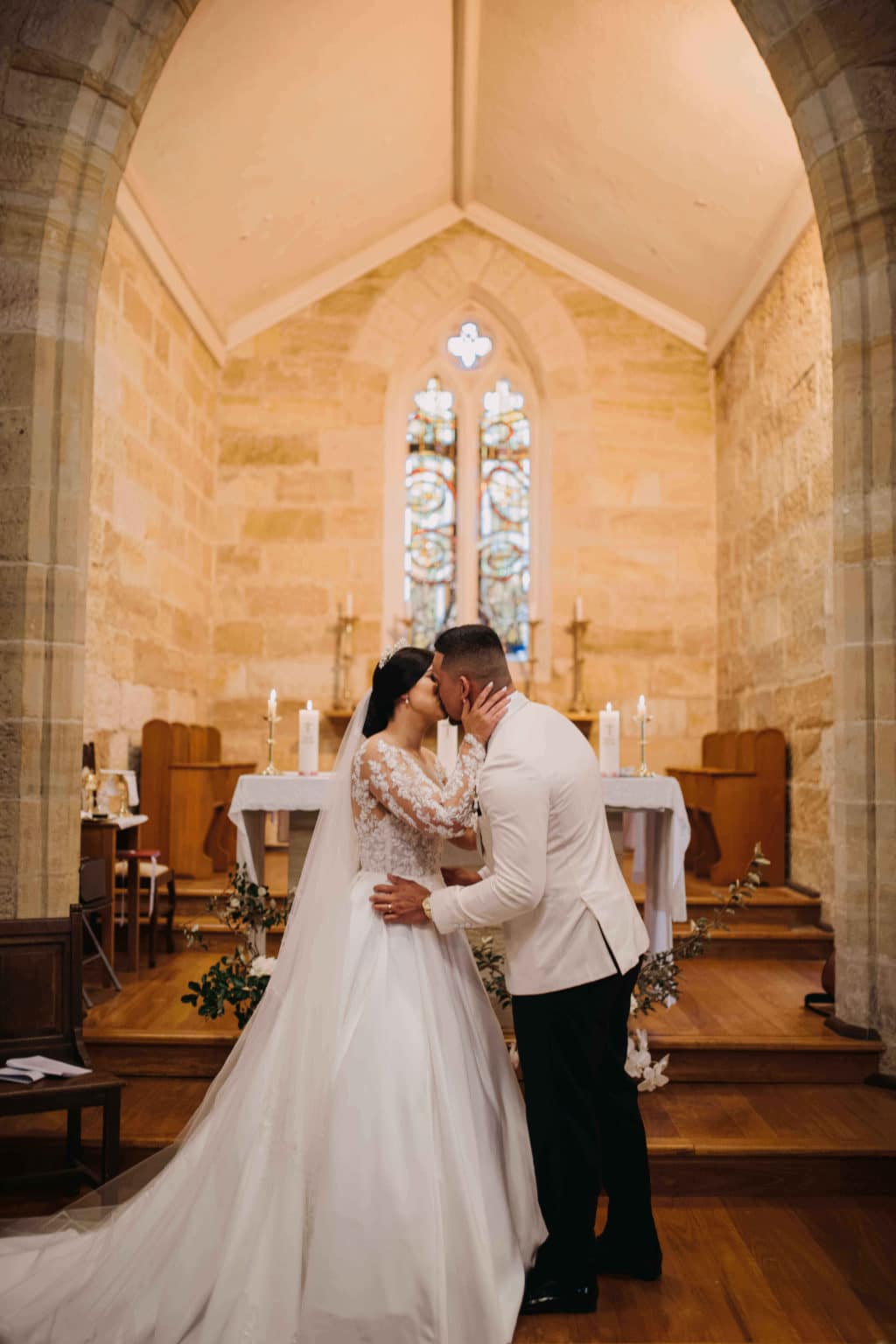
Whether of the religious, cultural, or non-secular type, traditional wedding vows are not for everyone. No matter how varied these existing vows are or how much liberty can be taken with them, sometimes it still doesn’t fit perfectly with what some couples have in mind.
And that’s okay! For modern couples that want to take their wedding vows completely into their own hands, there are also a few of options to try on for size.
Award-winning Newport wedding celebrant Emily Hall offers some examples:
Secret vows are a favourite among modern couples. No matter what kind of couple you are and what experience you want to create for your wedding day, these secret vows give you all the freedom in the world to profess your love for each other.
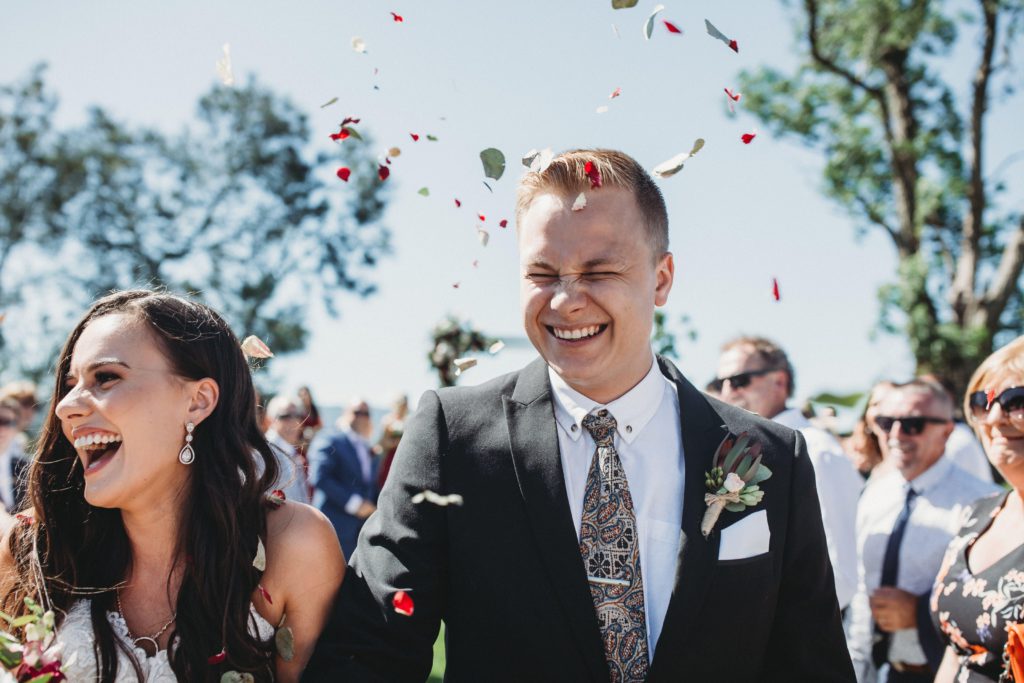
There are many reasons why couples choose to write their own wedding vows.
For one, not all couples consider themselves religious. And with most existing readily available traditional wedding vows being heavily hinged on religion, many couples find themselves exploring other options.
Some couples also feel that writing their own wedding vows makes the celebration deeper. Inviting friends and family a bit further into their love story can be an emotional, memorable moment for these couples.
Sometimes it’s simply a matter of wanting to make the ceremony more heartfelt and personal. Whether religious, non-denominational, or civil, traditional wedding vows are words that have been repeated by millions of couples throughout decades, if not centuries. While these tried-and-true words may be a good fit for some couples, expressing themselves in their own words may feel right for others.
Whatever the reason is behind writing your own wedding vows, one thing’s for sure: it can be an experience like no other.
Not only can it be deeply meaningful and personal to put these promises into your own words, but you can also look at it as an opportunity to begin married life completely on your terms as a couple. And, when things get hectic (and honestly, chaotic) during the wedding planning process, taking the time out to write your vows can be a bit of a breather. It can help bring you back and refocus on what matters: each other and your relationship.
Still not sure if it’s right for you? You may want to consider the following to help figure it out as a couple:
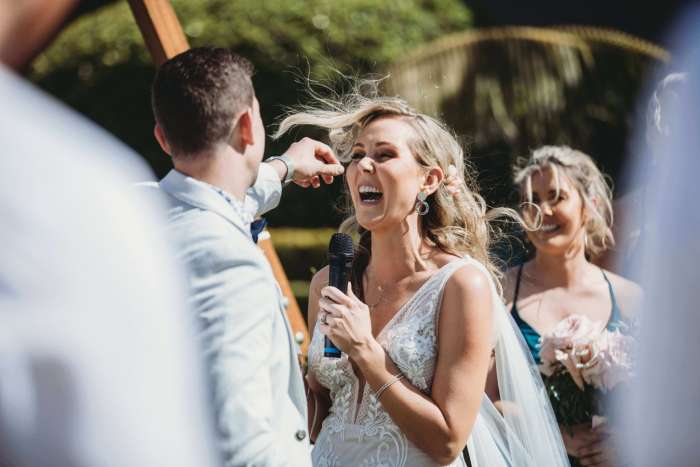
So, you’ve finally decided to write your own wedding vows.
But you might find yourself wondering how you’re supposed to condense all of the amazing, perfect, beautiful things you love about the person of your dreams into one little speech. How could you ever do them justice?
It can be tricky, but we’re here to give you a practical, step-by-step walkthrough of the process.
Step 1: Communicate with each other.
Before you write even a single word of your wedding vows, you and your partner must be on the same page.
Sit down as a couple and talk about it. Discuss your thoughts and feelings towards the task at hand, including any apprehensions or reservations you may have.
Victorian celebrant Evie Wilson gives her take. “Try to understand how your partner may be feeling about this. Often opposites can attract, and quite possibly there’s an extrovert in the relationship and an introvert. Appreciate that while this may be exciting and fun for you, it could be the stuff of nightmares for your partner. Try to be accommodating and realistic to help them get excited too!”
Be open with each other about your expectations, of yourself, and of each other. Not only will this ensure smooth sailing, but it will also most likely help set up some concrete guidelines for your writing. Even consider agreeing on the tone and general structure at this point.
Award-winning celebrant Candice Bydder gives a solid example of this regarding the format “Consider setting a word count. It’s ok if one of you writes more than the other, though sometimes it can make one of the couples feel self-conscious about their vows if there’s a big difference.”
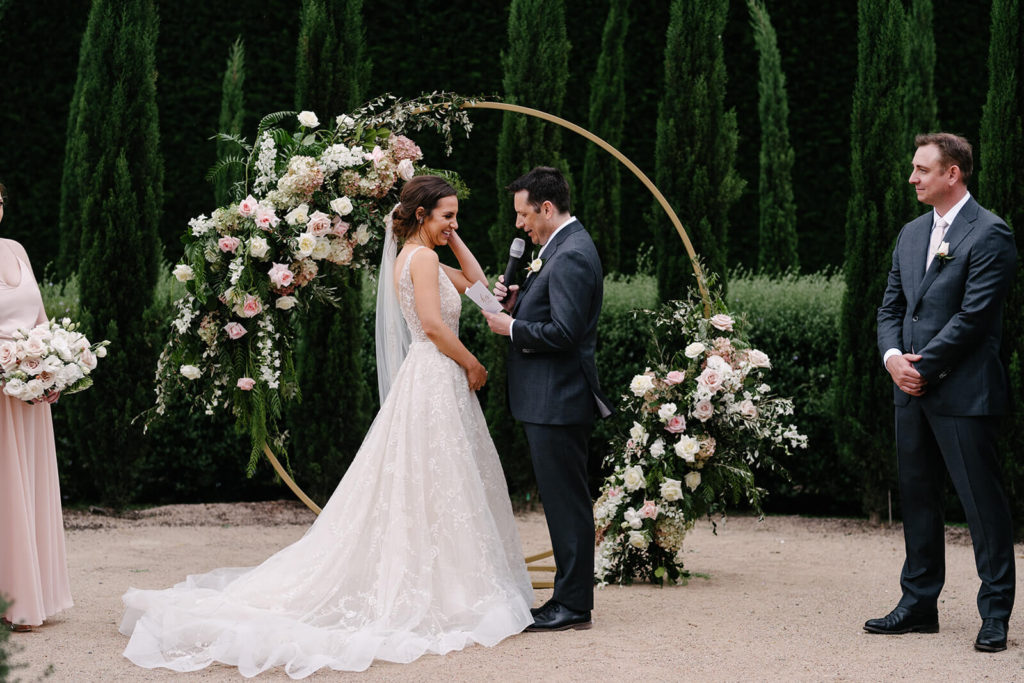
Step 2: Reach out to your celebrant.
Most celebrants are happy to help out with your wedding vows. In fact, they actually tend to prefer it.
Brainstorming with your celebrant even before writing can give you a better idea of what the actual vows will look like. Your discussion can potentially help set up a framework for how to write your wedding vows.
Here are a few key points on marriage vows you might want to bring up when you consult with your celebrant:
On the last point, celebrant Emily Hall has this advice: “It is important that the celebrant is across [your separate vows] so they can play the ‘mediator’. They can help ensure the vows are of a similar tone and length so that no one ends up embarrassed on the day.”
Not only will consulting with your celebrant help logistically, but you’ll probably walk away with a lot of priceless advice as well. But more on this later.
Step 3: Make a note of everything.
A blank page can be daunting, but there’s a quick fix for it: notes.
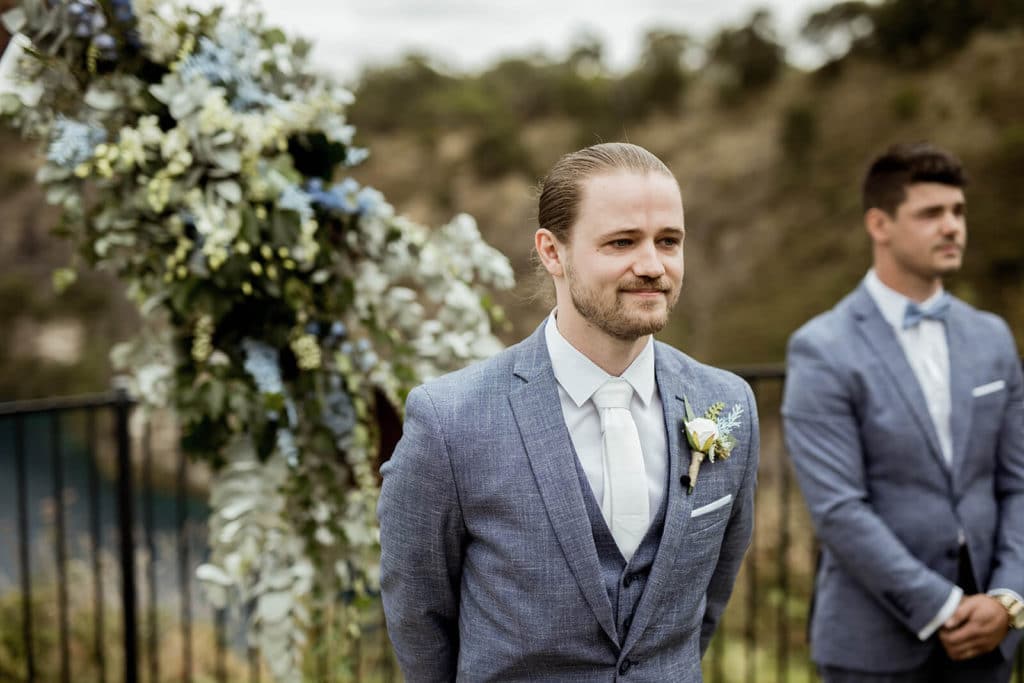
Jacqui Leopardi, one of Adelaide’s top marriage celebrants, recommends keeping these notes handy. “Start a notes page in your phone dedicated to vow writing material. If your partner does something you love, write it in there. If you have a thought about why you want to marry them or the promises you want to make, write it in there. By the time it comes to writing your vows, you will have lots of content and the only thing left to do is arrange it.”
Jot down as many notes as you possibly can… whenever and wherever the inspiration strikes. It doesn’t have to flow or even make sense yet. The goal is to gather a bank of material for you to tap into later on, allowing you to avoid that dreaded blank page.
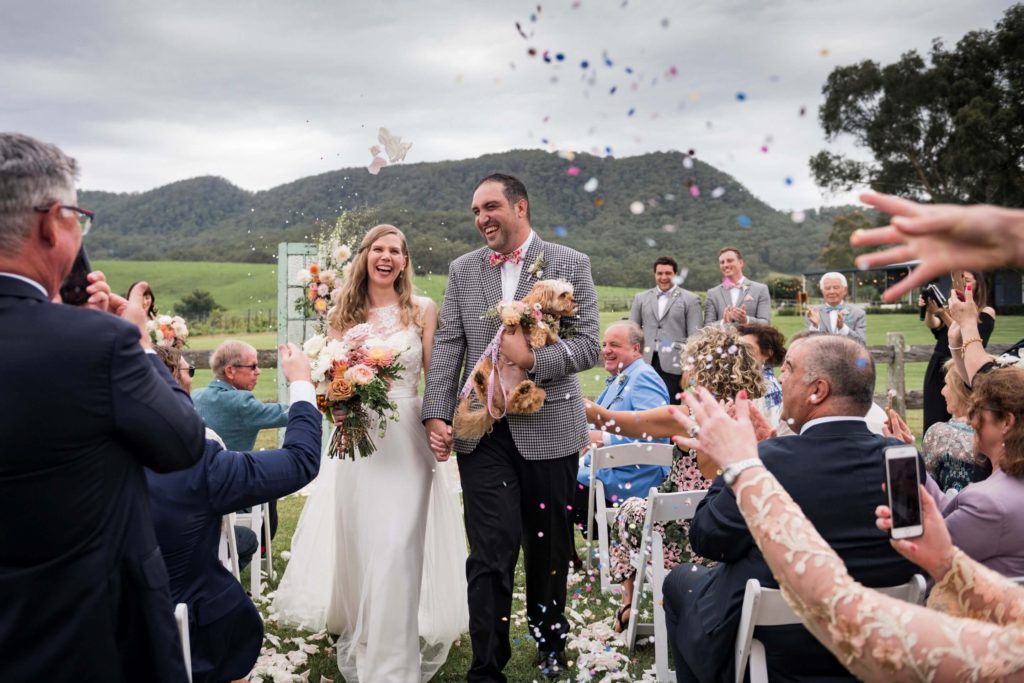
Step 4: Start early, and trust the process.
The truth is, writing wedding vows is probably going to take a couple of tries. If your first shot at it isn’t quite there yet, that’s totally alright!
Give yourself the opportunity to explore and the room to make mistakes. Accept that it’s a process and enjoy the experience. Write and get that first draft out of the way and onto paper, then edit, re-edit, re-re-edit… you get the picture.
With this in mind, it’s best to start early in the wedding planning and preparation process. Nothing kills creativity like stressing out, cramming your vows the day before your wedding.
Great things take time—give yourself enough of it to create wedding vows that feel just right.
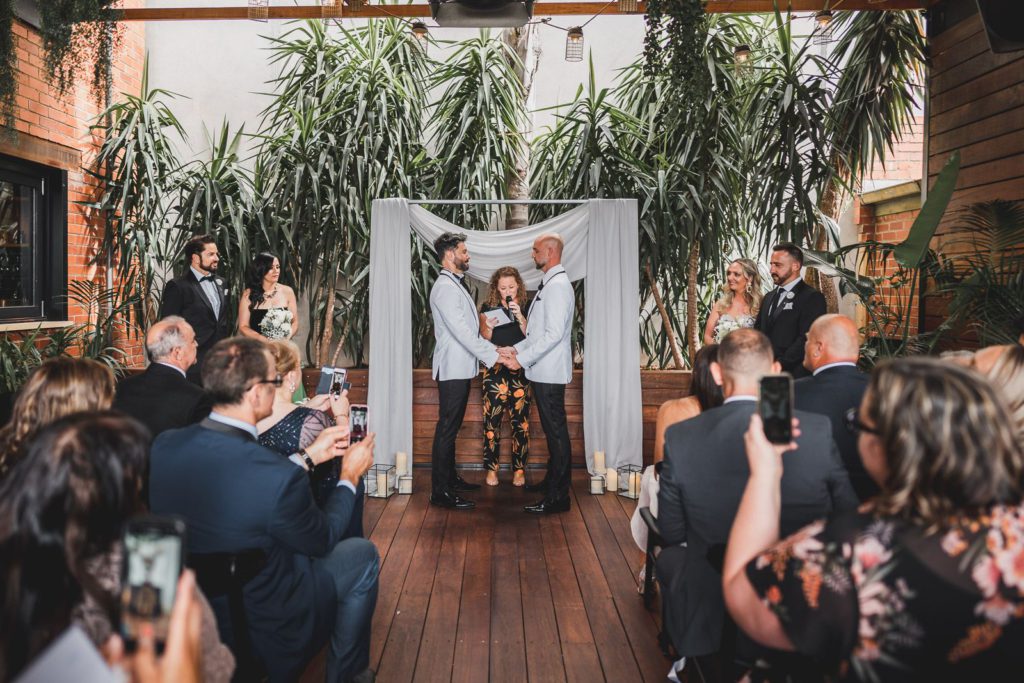
Nobody has witnessed more wedding ceremonies than—you guessed it—professional wedding celebrants.
And, as far as wedding vows go, from the simple and traditional to the fun and downright wacky and everything in between, they’ve probably heard it all. Needless to say, with all this experience, they’re in the perfect position to help you out with what to say in your wedding vows.
Not only do they come with hundreds of weddings’ worth of experience, most of the time, you will have also chosen a celebrant whose vibe and overall philosophy match yours.
Melbourne celebrant Wendy (of Wendy Does Weddings) confirms this. “I’ve worked with so many different couples but I realise that my all-time favourite couples share a lot of the same values. They are easy-going and unpretentious, socially and ethically aware. They are kind and warm. They enjoy the simple things in life but are also great travellers.”
So what does this have to do with writing wedding vows?
Well, wouldn’t it be great to have someone in your corner who understands you so deeply as a couple?
Don’t hesitate to ask your celebrant for advice on how to make your marriage vows. From what part of the ceremony they’d be best for, to wedding vow examples and templates, they have a few tips and tricks up their sleeves.
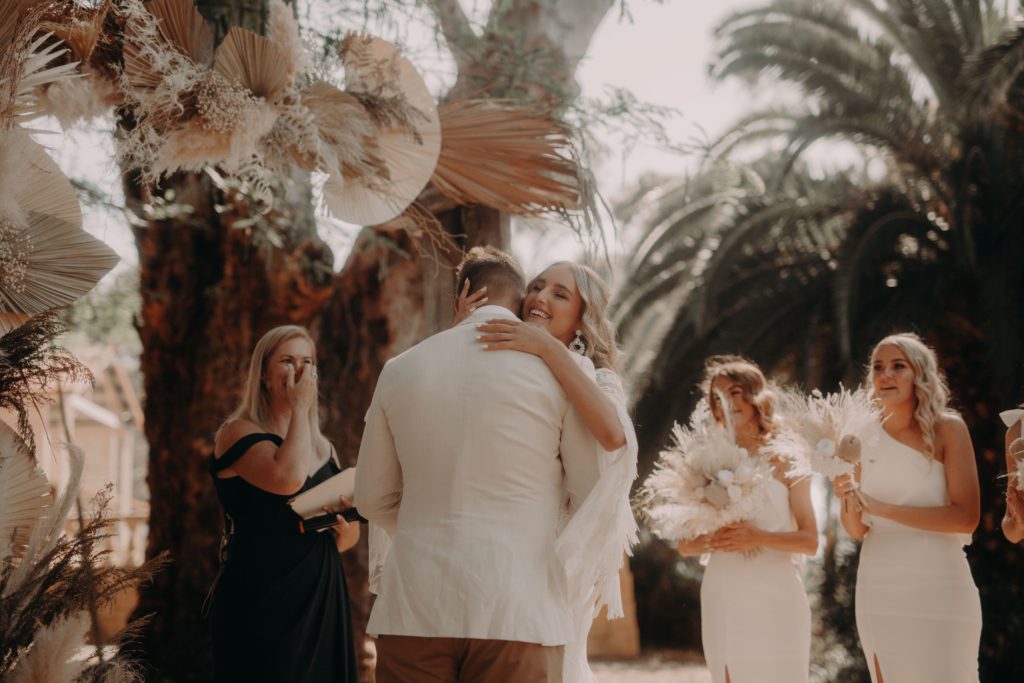
Some of the best celebrants in Australia weigh in on writing the best wedding vows:
In some cases, writing is just… not your thing. But, if personal wedding vows are really what feels right to you and this is the only thing in your way, don’t let it stop you!
Take it from one of Canberra’s top celebrants, Pat Coelho. “If you’re stressing about how to write your vows, don’t. […] RELAX! There are no right or wrong things to say in your vows.”
Also, bear in mind that there’s absolutely no hard and fast rule on how long wedding vows should be. The average tends to fall anywhere between 2-5 minutes, and keeping it even more brief is perfectly fine. In fact, focusing on quality over quantity is key.
“There’s no need to write a novel. 200 words are enough to express how much someone means to you,” advises in-demand Melbourne wedding celebrant Prue Takle.
And conversely, if you find yourself overwhelmed with too much to say, the same advice applies: keep it short and sweet.
“If you have a huge list of things to say, think about what might be better saved for the reception speech, a future Valentine’s Day card, or spur of the moment text message. Choose the things that most make you want to marry this person—the qualities about you and them that will inform what married life will be like,” says Prue Takle.
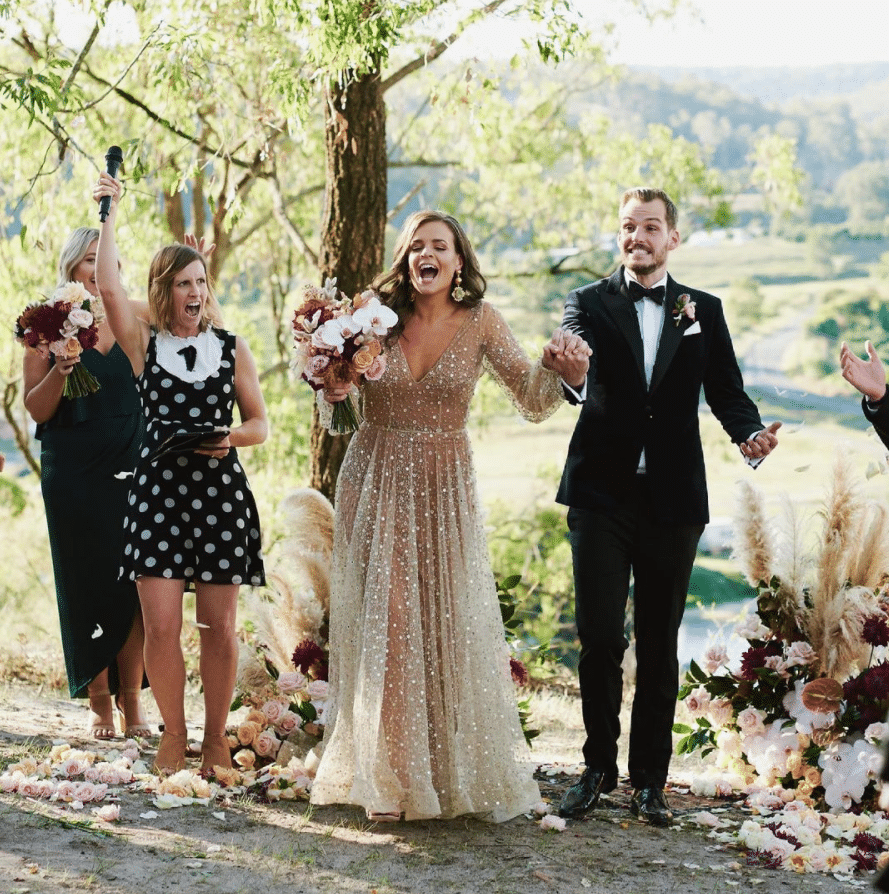
The pressure of wedding vows being the highlight of the ceremony can get to anyone. Add to that the fact that these will be spoken in front of all your family, friends, guests and it can definitely get stressful.
It’s all too easy to get caught up and into your head—“Am I doing it right? Will the guests love it? Will it sound good on the wedding video?”
Then you run the risk of end up with something that you think is right instead of something that feels—and IS—right for you.
Emily Hall reassures couples, “Your partner is marrying YOU for who YOU are.”
Make sure that your personality shines through. A perfectly imperfect wedding vow that’s 100% genuine beats a bunch of flawlessly polished yet empty words any day.
This doesn’t mean you can’t look up inspiration on Google or even take a couple of cues from your favourite books, movies, and songs!
“If the perfect words for you already exist, don’t hesitate to use them,” says Candice Bydder, adding, “Talk to your celebrant if you have any copyright concerns.”
As long as you stay true to yourself (and what you and your partner agree on), truly anything goes.
“This is ultimately a celebration of who you are as a couple, so you’ll want to make sure you approach your vows from a similar mindset. You can go humorous, serious, romantic, sentimental—whatever feels right to you both,” Gold Coast celebrant Jessica Otto sums up.
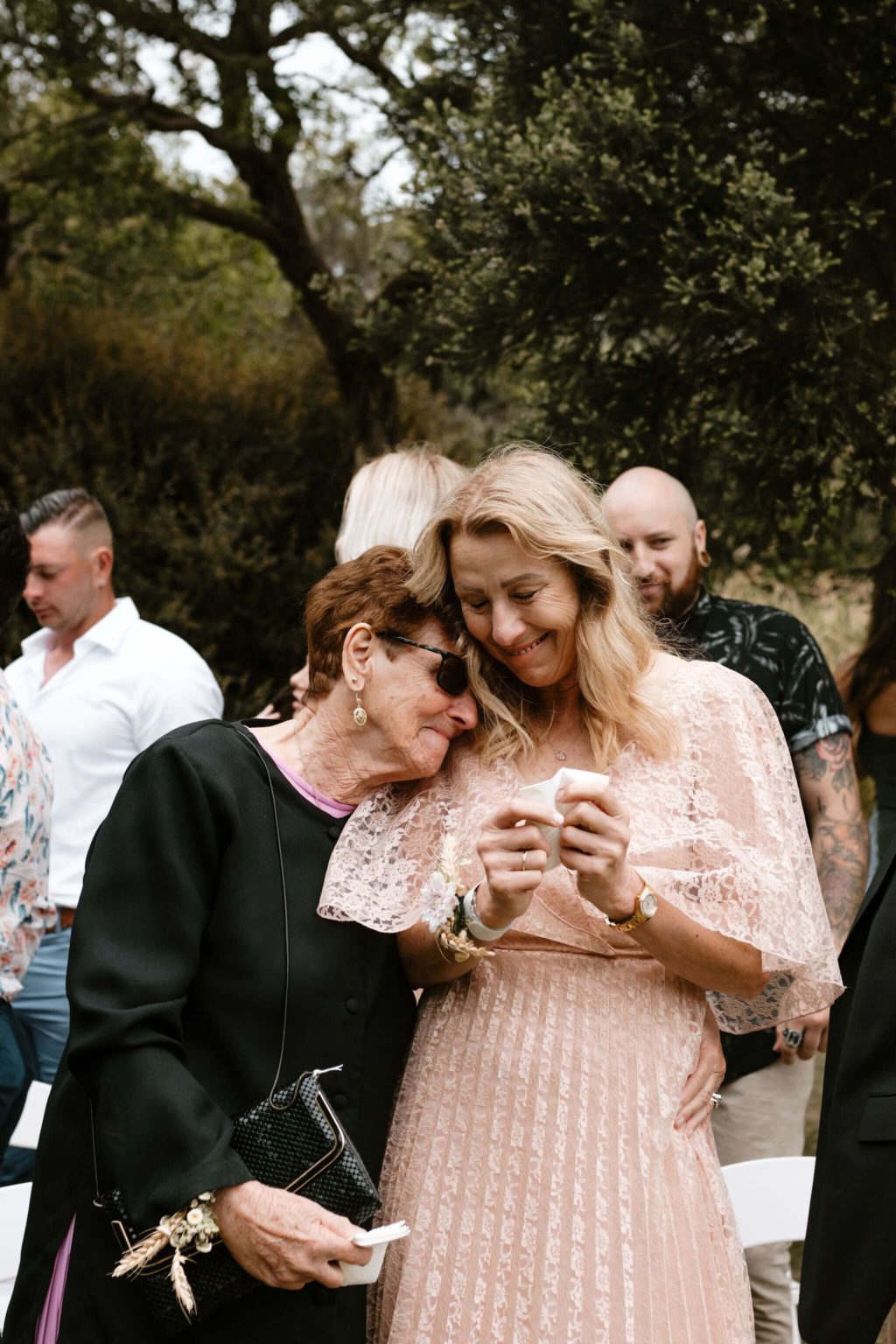
Asking the right questions can be helpful as you create your wedding vows.
Whether to jumpstart the process or get moving again if you find yourself stuck, our experts share some valuable thought starters:
Sydney celebrant Jill Player Cotton:
“Try asking yourself a few questions: What qualities do I value in the other person? What qualities do I value in our relationship? Are there any promises I would like to make?”
“Past, Present, Future:
Think about saying something from the past, like how you felt when you first met, or when you knew they were ‘the one.’ From the present, how you feel about them today. For the future, what you want to achieve with them.”
“What do you respect most about them? What will being married mean to you as a couple? What special quirk do you love about them that no one else would realise? What have you experienced together that you never would have on your own?”
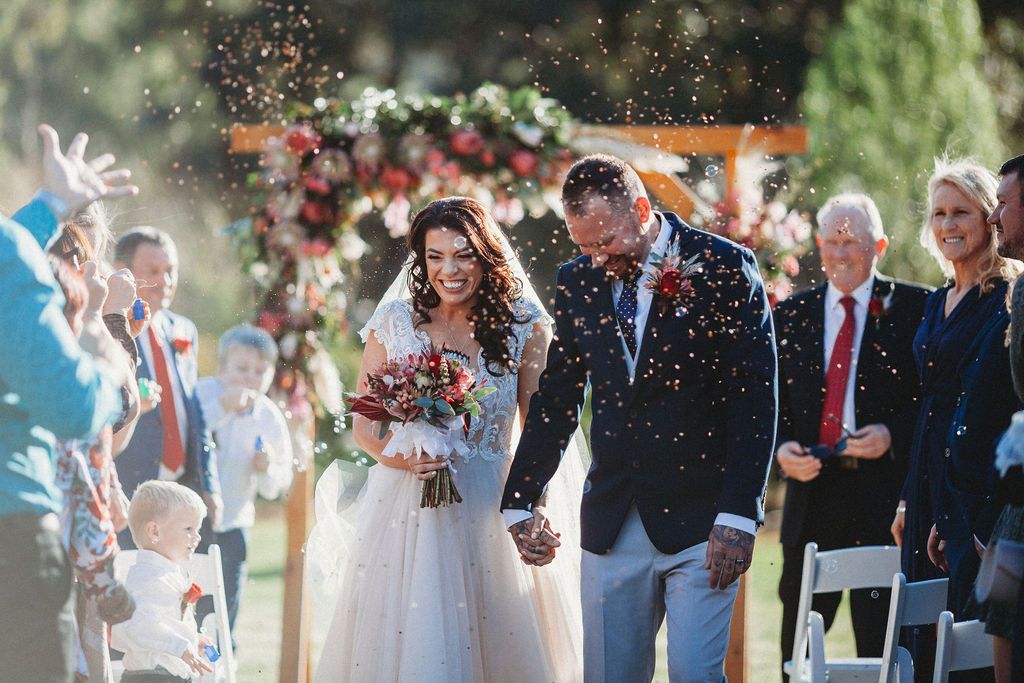
No matter what tone you’re going for, throwing in a specific anecdote or two is an excellent way to write unique wedding vows. This allows you to celebrate everything that’s special about your partner and your relationship.
For example, for romantic, sentimental wedding vows, you might want to allude to the first time you met or your first date:
“To me, you will always be as beautiful as you were the first time I saw you at the start of 7th grade, standing there in your pink sneakers.”
If humour is more your style, taking a few playful jabs at some pet peeves can work:
“I promise to always order extra fries for you to steal off my plate… even if you always say you ‘don’t want any.’”
You get the idea.
This is where all the Post-its and phone app notes can be super useful! These details and stories can add flavour to your wedding vows. And, with vows so personal, there won’t be any doubt in your spouse-to-be’s mind that these words and promises are truly meant just for them.
Borrowing from Becca Anderson’s popular quote on friendship, big love is made up of a million little things.
Yes, we recommend getting personal as well as adding a dash of humour especially if that’s who you are as a couple. But, remember to be mindful of certain boundaries.
Brisbane wedding celebrant Amber Gillam gently reminds couples, “Remember this will be a public announcement of your love, so others will be listening! So, try to avoid anything that could potentially be a little awkward.”
There’s a fine line between letting your guests in on an inside joke, and just… TMI (too much information). And, when walking the path of funny wedding vows, don’t forget to keep your partner’s best interest in mind.
Prue Takle takes on the subject. “There is nothing wrong with adding a little comedy into your personal vows. However, know your audience! And by ‘audience’ I mean the person you are marrying! Personal vows are not the time to test out new material for open mic night,” she cautions. “It’s not cool to throw in jokes about ex-boyfriends, a big gut, or bad music taste if your guests will be laughing but your fiancé will be fuming.”
Always check in with yourself—you want to be laughing with and not at each other.
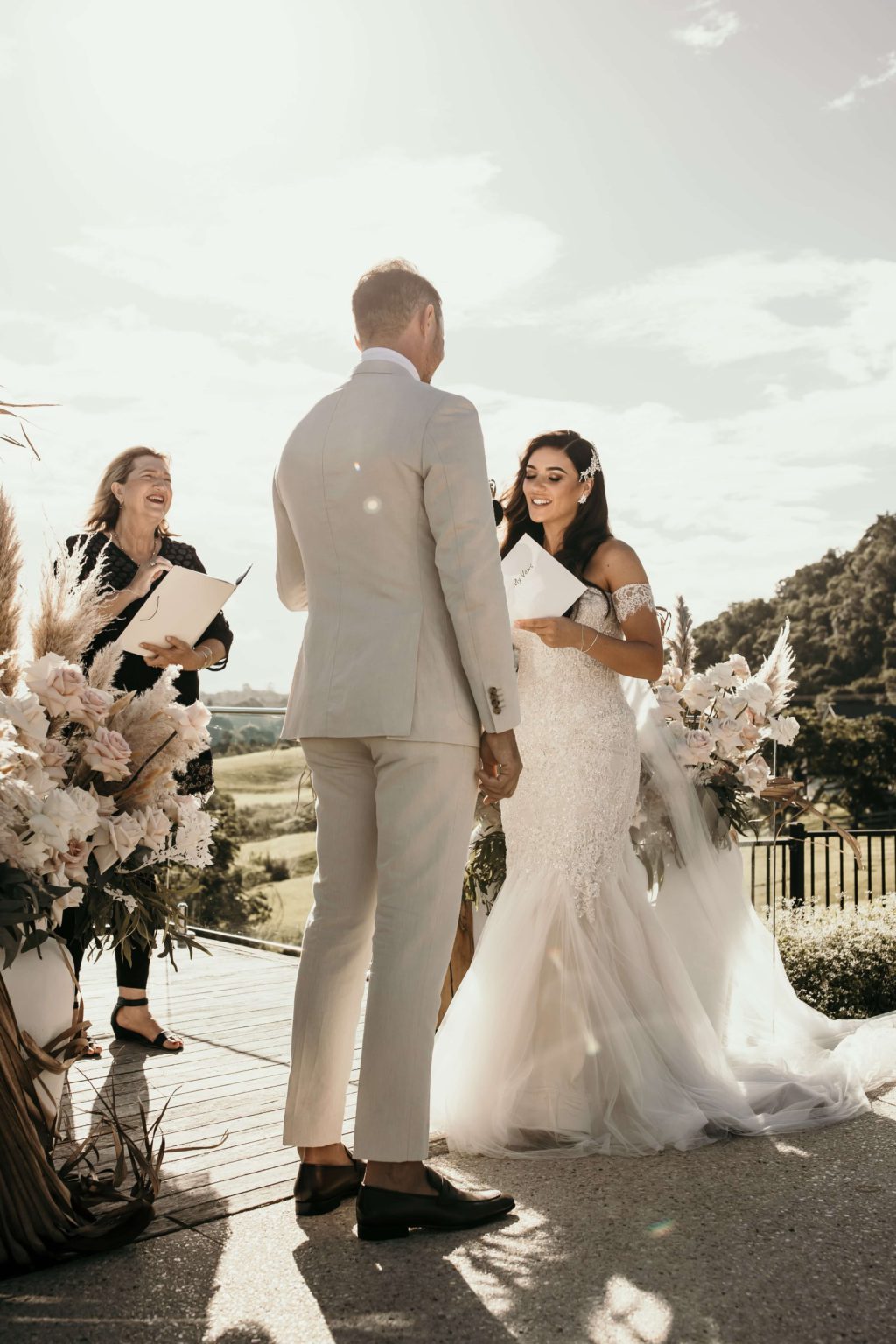
With everything that goes into writing your vows—not to mention, planning the other aspects of your wedding—it can get overwhelming.
Even with all the inspiration in the world and all the tips and tricks that exist, it all comes down to you. And so if it all gets to be a bit… much, what do you do?
Go back to the very essence of what wedding vows really are. Remember that wedding vows are your promise—a pledge as you begin your life together.
“The crux of wedding vows are the promises you’re making to one another as husband and wife,” Jessica Otto explains. “Remember these promises are what cement your commitment to one another, so pick one, two, or several to deliver and commit to.”
Jacqui Leopardi agrees, “Your personal vows are an opportunity to reflect on the things you’re thankful for, what you love about your partner and your hopes for the future. Most importantly it’s about making promises and commitments for your married life together.”
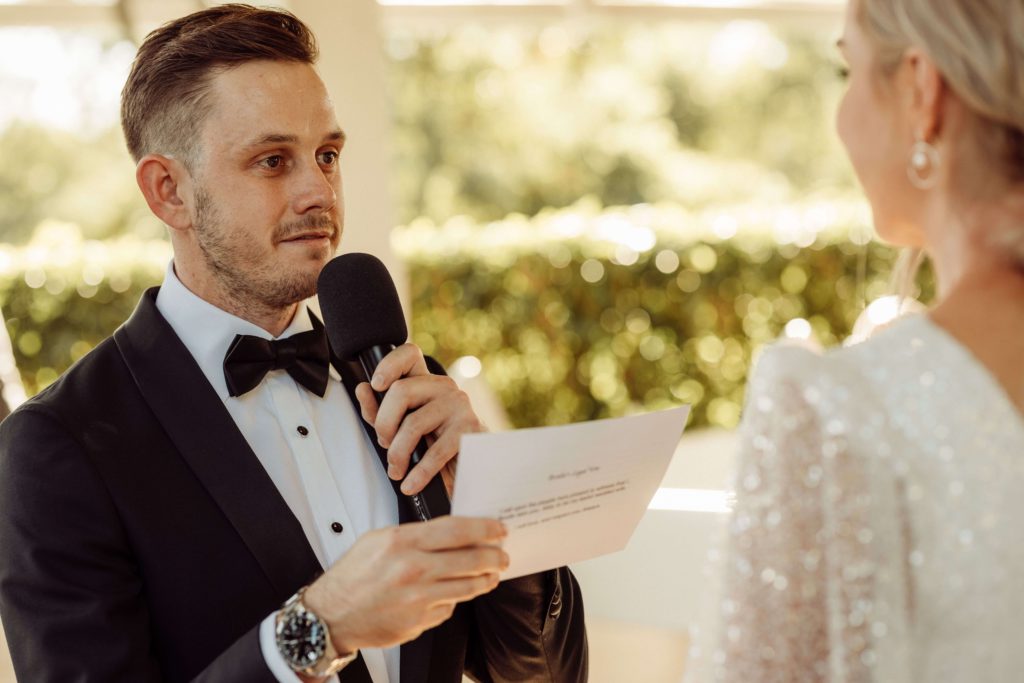
Just like not everyone is a writer, public speaking doesn’t come naturally to everyone either. That’s why it’s crucial to get the writing done as soon as you can, to allow yourself enough time to practice.
Not only will reading your wedding vows out loud build confidence and help you get comfortable speaking the words, but it can also work to further refine them.
Otto recommends practicing with a trusted friend or family member, or your celebrant. “Ideally, this person will be someone who is a good writer, and someone who knows your relationship. They may have good suggestions for you, or the simple act of reading it out loud might help you identify if what you have written flows.”
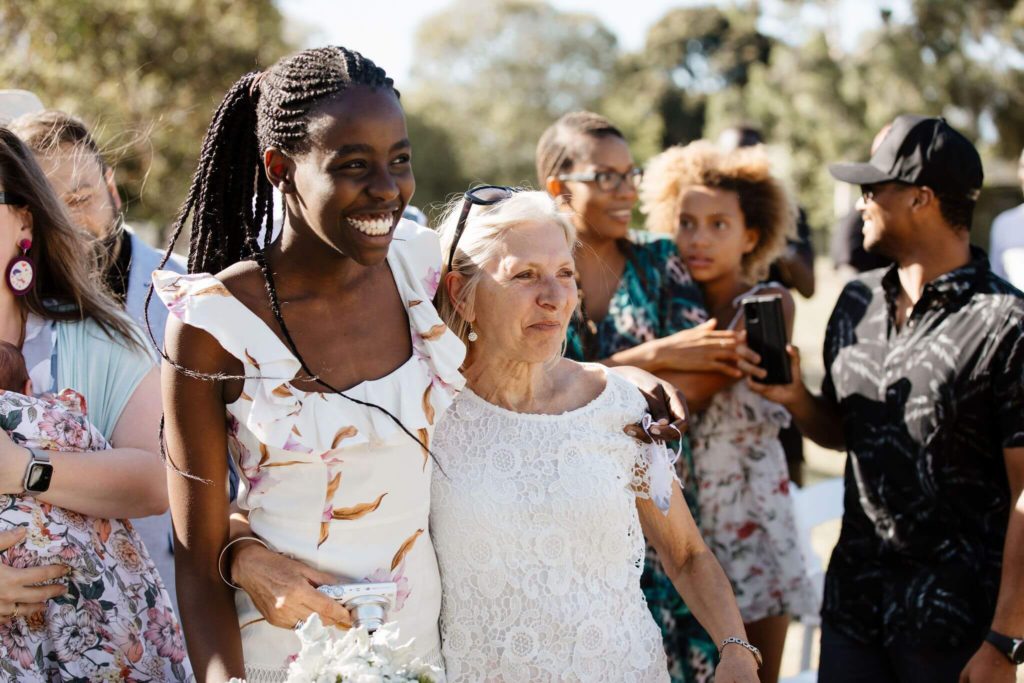
Okay, so you’ve done your homework and prepared as much as you can… now what?
Most of the time, that’s it—everything goes according to plan, and you and your spouse exchange your lovely wedding vows.
But sometimes, things just don’t turn out exactly the way you had in mind.
Bellarine Celebrant Sue Warner shares the story of one of her couples.
“[They] spent the time writing their vows separately and had every intention of reading them out right up until we met for the rehearsal. They then told me they’d decided not to read them out and to just go with the legal vows.
I thought about the time they’d spent creating what they wanted to say and suggested we add in an ‘Asking’ to the ceremony where I would read out the vows to each of them but in the form of a question. They had already written the words and I just turned them into questions [to which] they then replied ‘I do.’”
Sue Warner shares that the couple ended up loving this option. They got to say everything they wanted to say, in a way that ultimately was right for them.
Of course, leaving it up to the last second is obviously not the best option, but the point is that after all is said and done, it’s alright to let go and let things take the course that feels right to you.
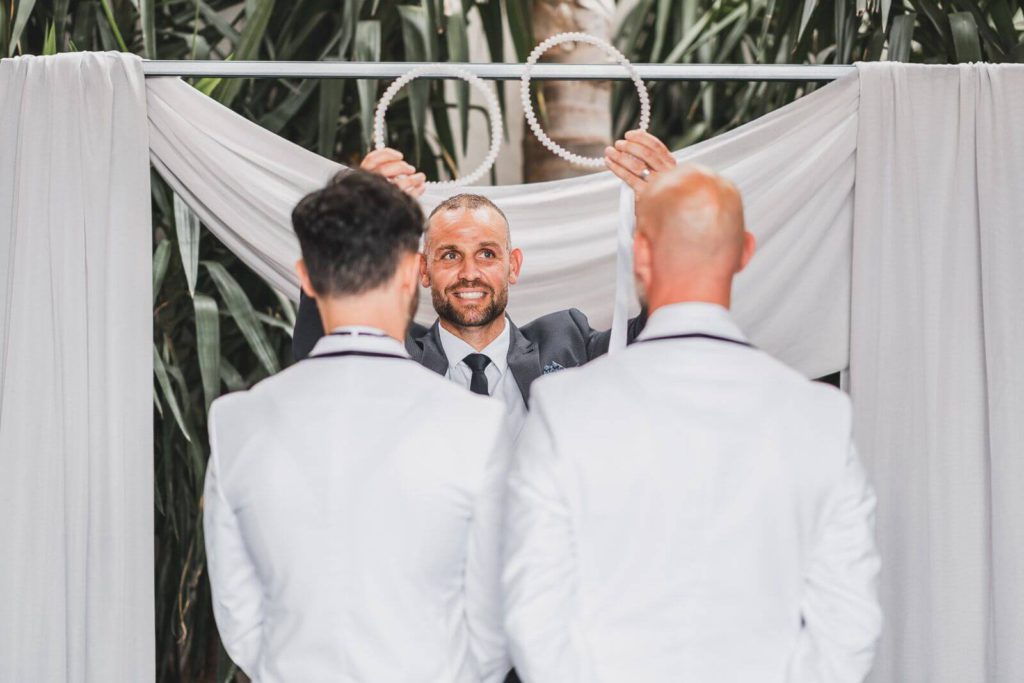
At the end of the day, no matter what type or style you choose, what’s important is that you end up with wedding vows that you love.
It doesn’t matter if you choose to go with traditional or cultural wedding vows or take a more modern approach and write your own. You can even mix it up and combine certain parts of each!
As long as you speak from the heart and express your promise of love and commitment to each other, you can’t go wrong.
Think one of the amazing wedding celebrants who generously shared their advice in this article might be the one for your big day?
Check out their bio by searching for them on the website.
And if you can’t wait to get started on writing your wedding vows, download our free foolproof wedding vow template to help you on your journey.
One of the best things about Australia is that it is incredibly diverse.
Over a third of the population hails from overseas, and there are currently over 300 identified ancestries represented in the country. There’s also a good measure of religious diversity, with Christian, Islam, Buddhism, Hinduism, and many other faiths being practiced.
If your heritage and roots are important to you and your partner, you may want to look into incorporating cultural traditions and wedding vows into your ceremony.
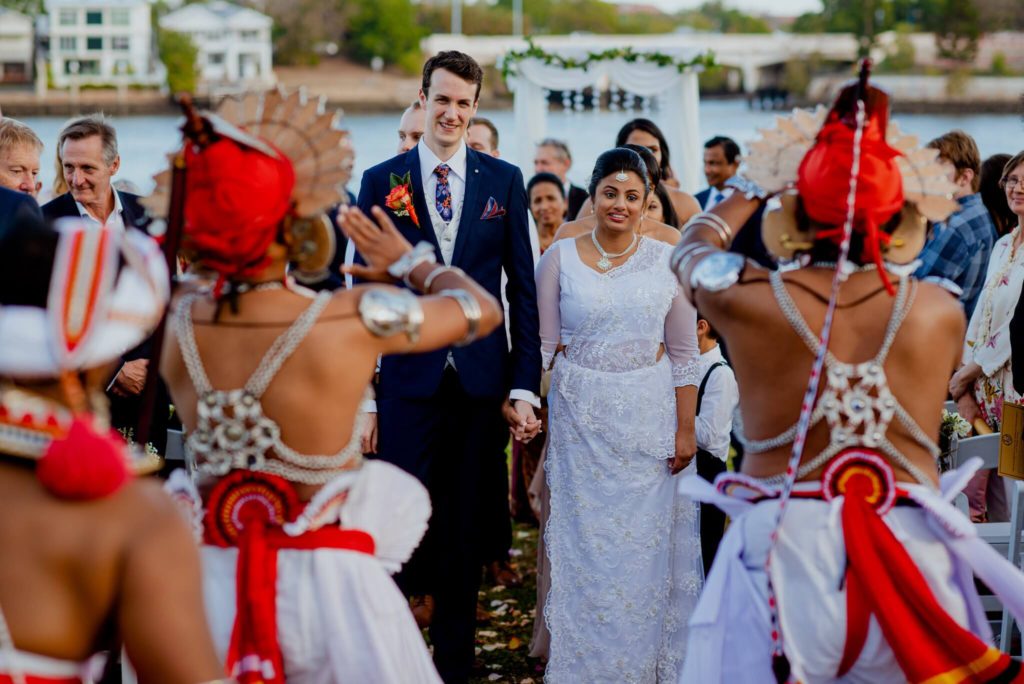
Whether or not you and your partner have Aboriginal ancestry, consider paying tribute to First Nations during your ceremony.
Including an Acknowledgement of Country can be a powerful way of recognizing Aboriginal peoples as rightful custodians of the land. This is a symbolic mark of respect that honours and advocates for the rights of Indigenous peoples.
No singular required wording exists for Acknowledgement of Country. It can be as simple as including words similar to the following in your wedding vows:
“I would like to begin by acknowledging the Traditional Custodians of the land on which we gather today, and pay my respects to their Elders past and present.”
Or:
“We, [the couple] acknowledge and pay respect to the past, present and future Traditional Custodians and Elders of this nation and the continuation of cultural, spiritual and educational practices of Aboriginal and Torres Strait Islander peoples.”
With marriage being a Prophetic tradition, the Nikah ceremony is an important pillar of the Islam faith. It legitimizes a couple’s relationship in front of God and is therefore fundamental to any Muslim wedding.
The Nikah ceremony consists of an Imam or officiant reciting the first chapter (the Fatihah) or other select verses from the Quran, followed by a short sermon and durud (blessings). In the sermon, the Imam may talk about what marriage is and the responsibilities that come with it.
Technically, the ceremony can conclude with the durud, but some Muslim couples do choose to exchange vows in a simple, traditional form such as:
“I, [bride], offer myself to you [groom] in marriage in accordance with the instructions of the Holy Quran and the Holy Prophet, peace and blessing be upon him. I pledge, in honesty and with sincerity, to be your obedient and faithful wife.”
“[Bride], I, [groom], pledge myself, honestly and sincerely, to be your faithful and helpful partner.”
Lebanese weddings are known for being big, bold, and extravagant. In contrast, though, most Lebanese couples go for simple wedding vows.
Sydney-based celebrant Orna Binder shares some examples:
“I promise to love you without reservation, comfort you in times of distress, encourage you to achieve all your goals (as I am sure you will for me), rest and enjoy life, laugh with you and cry with you, grow with you in mind and spirit, always open and honest with you, and cherish you, and I vow to be true and faithful for as long as we both shall live.”
“I promise to love, respect, protect and trust you, and give you the best of myself, for I know that together we will build a life far better than either of us could imagine alone. I choose you, my equal in all things.”
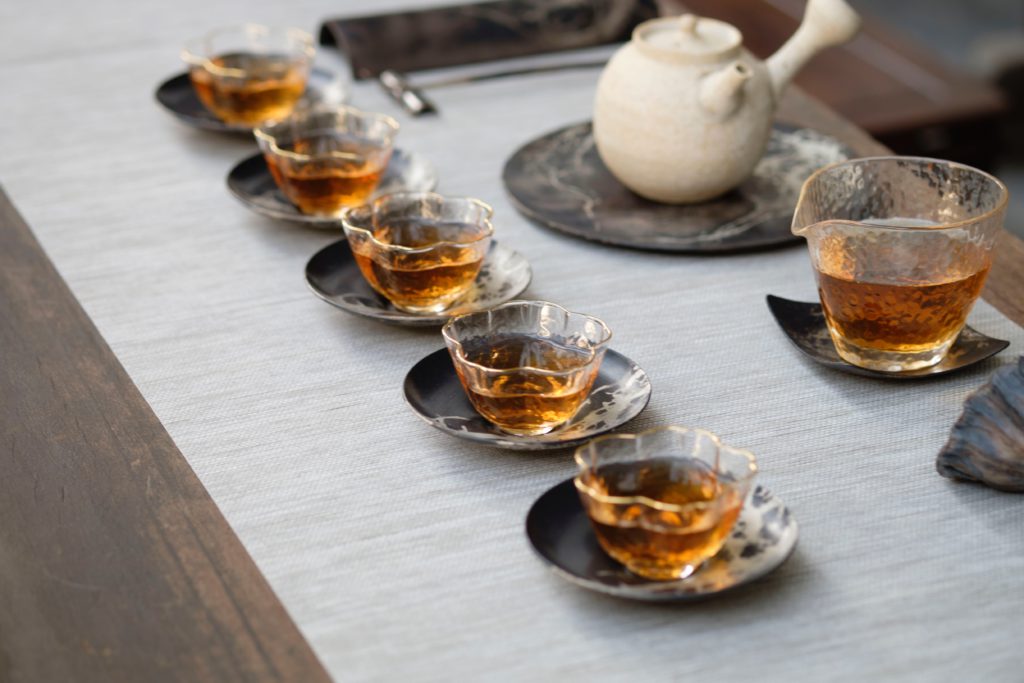
From ceremonial collecting of the bride from her family home to often lavish banquets after the ceremony, traditional Chinese weddings can take an entire day.
Out of the entire affair, the ceremony itself is actually one of the shorter (though not any less significant) elements. It is an intimate affair in which the couple exchanges vows and signs the official paperwork, usually with only their immediate family present. They then honour their ancestors and patron deities with ceremonial bows at the family altar and to each other.
While the actual words exchanged by the couple are often just variations of classic wedding vows mentioned earlier, Chinese weddings traditionally involve a tea ceremony or the Jing Cha.
Family is of the utmost importance to Chinese couples, and many of their wedding customs serve to honour this. From outsiders’ point of view, the Jing Cha is almost like exchanging vows that extend beyond the couple, to each other’s families.
Beginning with one party’s parents, the couple kneels or bows to serve tea to each member of the family. In exchange, they are presented with gifts that serve as symbolic blessings of the union, officially welcoming the other party into the family.
The tea ceremony is a meaningful way for a couple to formally express their deep appreciation for the love and support that went into raising them as individuals.
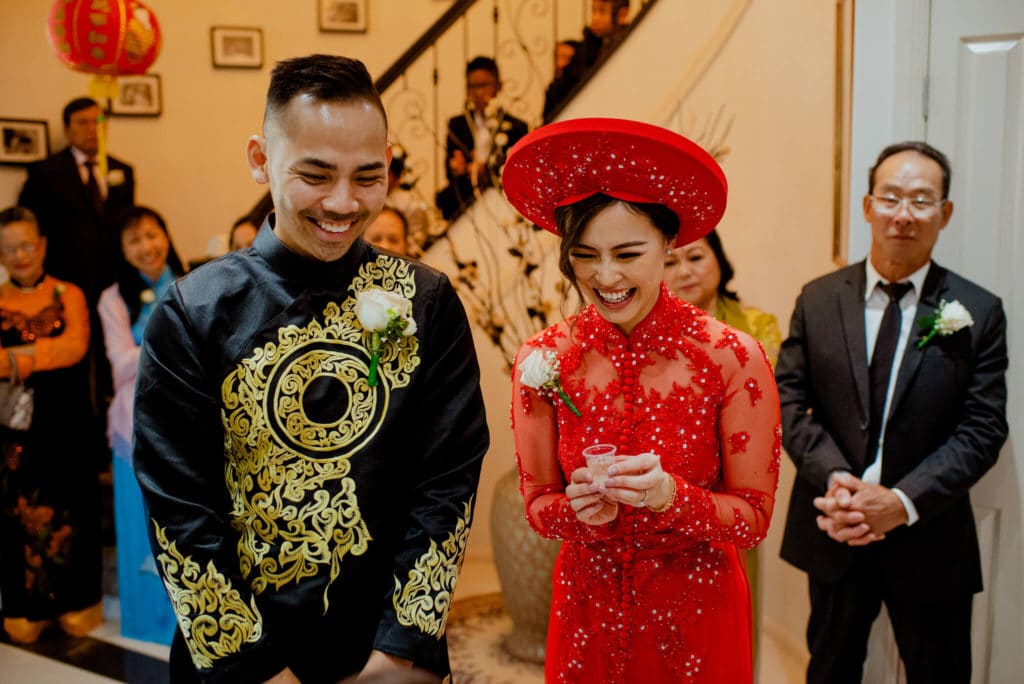
Among the many rituals that a traditional Jewish wedding entails, there are two that involve an exchange of wedding vows.
First is the Ketubah signing. The Ketubah is a marriage contract that contains all the details of the wedding. It is signed beforehand and read aloud to the guests during the ceremony itself.
Traditionally, this document lists financial and conjugal responsibilities and obligations to each other, as well as provisions for divorce or untimely death.
However, many modern Jewish couples find the ancient text outdated and choose to create a Ketubah that they deem fit for their union. Being more personal and unique to each couple, these modern Ketubot usually include promises, sometimes even poetry and songs.
Another Jewish ritual is that of exchanging wedding vows under the chuppah, a gazebo-like structure that symbolizes the home the couple is building together. It is during this part of the ceremony where rings are exchanged, while the couple states the minimal yet so poignant and romantic wedding vow:
(In Hebrew) “I am my beloved’s and my beloved is mine.”
A reading of the Seven Blessings or Sheva Brachot can then follow, either by the Rabbi or important guests specially selected by the couple. See this short translated excerpt from the traditional text:
“We bless God for creating joy and happiness, bride and groom, mirth song, gladness and rejoicing, love and harmony, peace and companionship; and we thank God for letting this bride and groom to rejoice together.”
Nowadays though, couples have more versions of the Seven Blessings to choose from, thanks to modern Rabbis who have reinterpreted the ancient text. Some of these versions use gender-neutral or same-sex marriage-inclusive wording. Still, these stay true to the essence of traditional Jewish wedding vows.
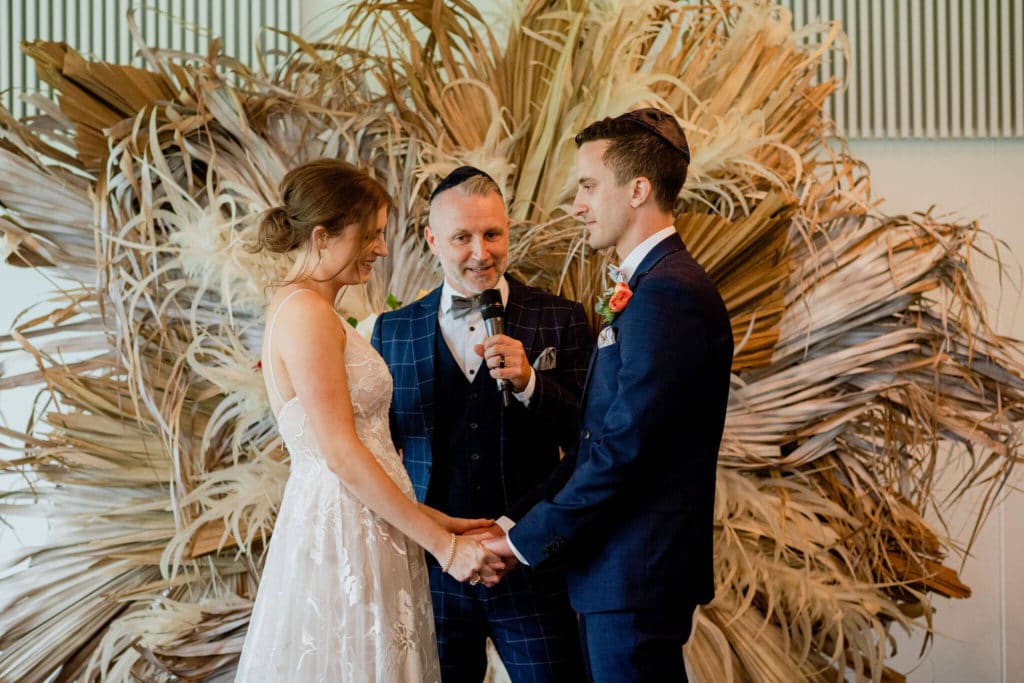
When it comes to traditional Celtic weddings, it’s less about what to say in the wedding vows and more about the actions performed while these are spoken.
If you’ve ever wondered where the phrase “tying the knot” came from, the common Celtic tradition of handfasting literally has the answer for you.
Handfasting is a tradition in which couples’ hands are bound together as marriage vows are exchanged.
It begins with the celebrant explaining the significance of the ritual: symbolism of the couple’s commitment to each other, and the recognition of their now-intertwined lives.
The couple, either facing each other or side-by-side, joins hands. Their joined hands are wound with ribbons or cords, which are then tied in a knot. For an even more meaningful ceremony, some couples invite certain members of their wedding party, friends, or family to take part in winding and tying the ribbons.
The verbal exchange of vows may happen right before, during the tying, or after, while the hands remain bound.
Featured Image: Davish Photography
Featured Celebrants: Emily Hall | Evie Wilson |Celebrations by Candice | Jacqui Leopardi Celebrant | Wendy Does Weddings | Ceremonies with Bryanna | Forever Yours Weddings | CBR Celebrant | Prue Takle | Amy Watson Marriage Maker | Jessica Otto | Jill Player Cotton | Amber Gillam | Sue Warner | Orna Binder Wedding Celebrant
Wedding Photography Credit: Davish Photography | Zee and Cee Photography | Beth Fernley Photography | OneHeart Studios | Rexvil Photography | Live Photography | CC Photography | Jade Cliff Photography | Jac and Heath Photography | Zoe Louise Photography | Chantelle Venter Photography | Naturally Jek Photography | Nicole Orlowski Photography | Zoe Louise Photography | CC Photography | Eric Wang Photography | 五玄土 ORIENTO Photography | Authentica Creative

